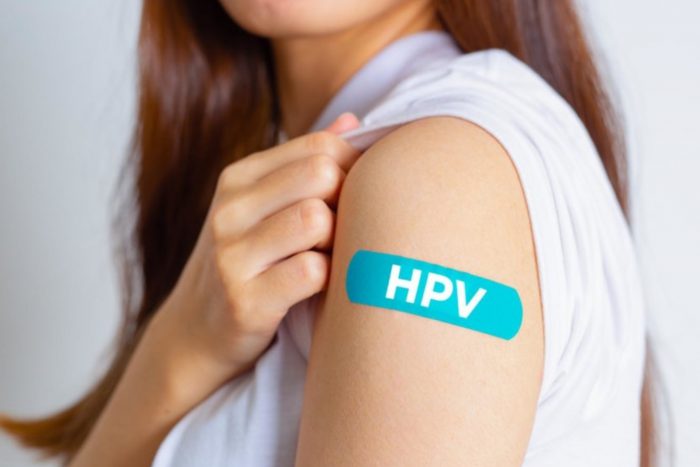
Myths and misconceptions about HPV are enormous – We are here to clear up some of the confusion and explain the science behind it.
The myths and half-truths surrounding HPV can lead to devastating consequences. For instance, many women suffer from anxiety and other mental health issues because they suspect their partner has not been faithful. In some cases, patients will pay thousands of dollars to undergo treatments without any necessity. However, the most dangerous side effect of these myths is neglecting an easy test that could potentially save your life.
Since many aspects of HPV are still vague, this situation creates a window for speculation and misconceptions. Additionally, scientists have discovered new information about HPV recently. However, the minds of the general population are still stuck in inaccuracies and misinformation. The same is happening with the medical community and educators, who have not yet caught up on their HPV knowledge. In truth, the topic of HPV can be confusing to the public, including scientists.
Here are common myths surrounding HPV infections and the truth.
1. Myth: HPV is a rare infection
Fact: HPV is common
It is understandable that anyone with an HPV diagnosis thinks he/she is alone. In reality, HPV is incredibly common, affecting up to 80% of sexually active individuals during their lifetime. However, the asymptomatic nature of most HPV infections gives us the false belief that this infection is uncommon.
2. Myth: People engaging in casual sex must have HPV
Fact: Sexually active people can get STIs, including HPV
According to reports, up to 20 million people in the United States get a sexually transmitted infection (STI) every year. While the incidence of STIs might be higher in people who have different sexual partners, this shouldn’t condemn people who have casual sex. Their risk might be higher due to the number of partners they have; however, anyone sexually active can develop HPV or other STIs.
The transmission of HPV can occur during a one-night stand or a long-term, loving relationship. For instance, one study concluded that up to 21% of middle-class, middle-aged, married women have cervical HPV. A different study proved that people who had fewer sexual partners than 4 were still infected with HPV.
3. Myth: My partner has HPV, this means he/she cheated
Fact: While STIs have a bad reputation among couples, the diagnosis of HPV does not automatically mean your partner cheated. The virus can remain dormant for many years, which makes it impossible to track down the source of infection.
Researchers found that HPV can remain dormant in the body for many years without any sign of infection. In other cases, HPV can lead to warts and cervical lesions months after contracting the virus. We refer to HPV which stays asleep in the body without any symptoms as latent.
Unfortunately, this myth causes great problems between couples, leading to the assumption that the partner has been unfaithful. Because the vast majority of people with HPV don’t know they have the infection, the virus might have been there for a long time.
Most HPV cases get diagnosed during routine tests or after consulting the doctor for an unusual symptom. The bottom line, being positive with HPV only means that you have contracted the virus at a certain point in your life. It doesn’t mean you cheated recently.
4. Myth: Genital warts will always result in cervical cancer
Fact: Genital warts are mostly benign and rarely develop into cervical cancer.
The Centers for Disease Control and Prevention (CDC) says there is no evidence that genital warts are strictly associated with cervical cancer.
In fact, the majority of genital warts result from low-risk types of HPV, such as 6, 11, 42, 43, and 44. These strains do not always cause genital warts. Sometimes, they only present as a transient abnormality in Pap seam results.
Remember that both men and women might be carriers of high-risk HPV strains, regardless of whether they have genital warts. It also doesn’t matter whether they are asymptomatic or not.
5. Myth: Abnormal Pap tests means you have cervical cancer.
Fact: Most people who have an abnormal Pap result will never develop cancer.
Abnormal pap smears can be the risk of several factors aside from high-risk HPV strains. This test takes a look at cervical cells to assess for any abnormalities. In other words, an abnormal pap smear test could just mean that a few cervical cells are not looking identical to your healthy cells. Besides HPV, this could be the result of a local irritation caused by a low-risk HPV strain. In some cases, abnormal pap tests result from a mistake when preparing the sample.
To give you a concrete answer, your doctor will ask for a follow-up test after getting an abnormal pap smear. It’s important to remember that Pap smears are helpful to screen for cervical cancer, not diagnose it. Therefore, your healthcare provider may ask for additional tests, such as a biopsy or colposcopy.
For a screening to work, women should get tested regularly. More than half the cases of cervical cancer occur in women who have never undergone a screening test before.
6. Myth: Once you have HPV, you will have recurrences.
Fact: Genital warts and cellular dysplasia do not always come back.
Genital warts and cellular dysplasia can come back. However, it certainly does not happen for all people. For instance, some individuals may only experience one episode of genital warts. Others could suffer for years with this infection. Fortunately, the vast majority of patients will get rid of the infection thanks to their immune systems. This lowers the risk of recurrences and makes the infection less likely to come back.
7. Myth: Lesbians don’t need regular cervical cancer screenings
Fact: Screening for HPV infections is crucial for all women including lesbians.
The root of this myth stems from the traditional view on how HPV spreads. Penile-vaginal sex is one of the most common ways to transmit the virus. However, HPV can also spread through skin-to-skin contact, which means lesbians can also get it.
According to a study from the University of Washington, many lesbians who have never been in a sexual relationship with a man have been diagnosed with HPV. With that said, the prevalence of HPV among gay women is lower compared to their heterosexual counterparts. This does not shield gay women from the risk of cervical cancer, which is why all women should get cervical cancer screenings.
8. Myth: Women with abnormal Pap tests should get their male partners to test for HPV
Fact: We still do not have any diagnostic tests to determine HPV in men. Additionally, the treatment of HPV in men is not yet possible.
Guidelines of the CDC state that examining sex partners after an abnormal Pap smear test is not necessary. While it is possible for the partner to carry the virus, the probability of them showing any symptoms is unlikely. Additionally, we can never be sure whether this partner will spread the virus to other sexual partners.
In the case of a genital warts, women should contact their sexual partners to schedule a physical examination. Talking with a healthcare provider can give their male partner important information about HPV and its potential complications. Eventually, they can prepare themselves if genital warts develop.
9. Myth: Wearing a condom during sex removes the risk of HPV transmission
Fact: When used correctly, condoms can protect against mays STIs (e.g., gonorrhea, chlamydia, HIV). However, viruses that spread via skin-to-skin contact (e.g., HPV, herpes) can still be transmitted even while wearing condoms.
Since condoms do not cover all the genitalia, there is still a risk of viral transmission. For instance, the vulva, anus, base of the penis, and scrotum are uncovered. Contact with genital organs during sex can lead to HPV transmission.
Of course, we are not recommending you should not use condoms. Studies repeatedly emphasize the important role of condoms in lowering the risk of HPV infections and HPV-related complications. They also prevent many other STIs and unintended pregnancies. This is why you should wear a condom whether you are in a loving marriage or having sex casually.








